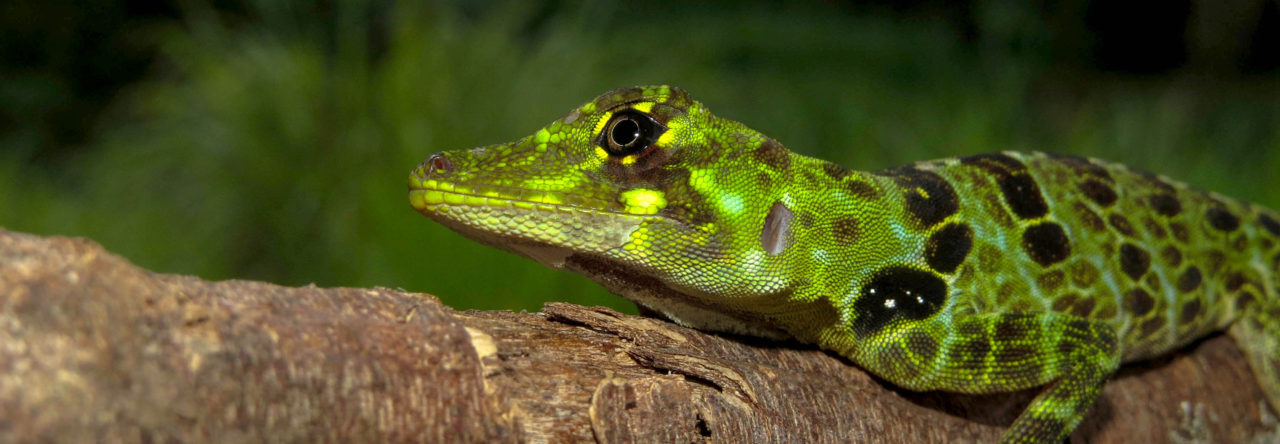
Anolis punctatus. Photo from http://www.flickr.com/photos/32688820@N02/3121948727/sizes/m/in/photostream/
Anolis punctatus is one of the coolest looking anoles of South America, which is saying a lot. It is widely distributed throughout South American rainforest habitats, but has been relatively little studied. Last night Ivan Prates exhibited a poster reporting the results of a phylogeographic analysis of the species from Amazonian and Atlantic forests. The study is impressive in its scope and sampling, and finds a high degree of genetic divergence throughout the species’ range, paralleling results for another Amazonian species group, A. chrysolepis and relatives. In addition, the Atlantic forest populations are nested within Amazonian populations, suggesting that dispersal occurred from the Amazon to the Atlantic. Molecular calibration puts the date of the dispersal at ca. 3 million years ago, which would correspond with vegetation reconstructions that suggest the forests were connected at that time.
In addition, the study contained samples of the extremely little known horned anole of the Amazon, A. phyllorhinus, which places this species as the close relative of A. punctatus, and hence distantly related to the Ecuadorian horned anole, A. proboscis.
- Evolution in Real Time on Lizard Island - March 23, 2025
- Spider Snags Adult Anolis osa - March 22, 2025
- An Homage to the Green Anoles of New Orleans - March 21, 2025


Leave a Reply